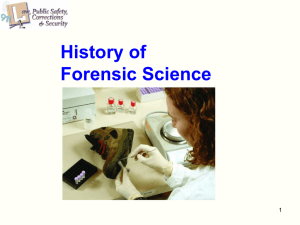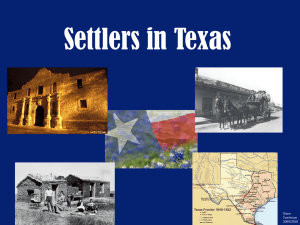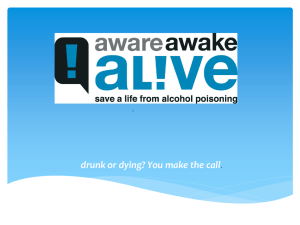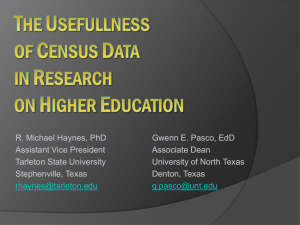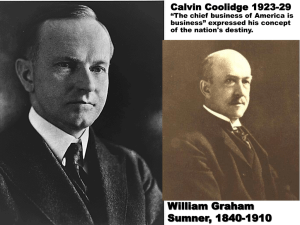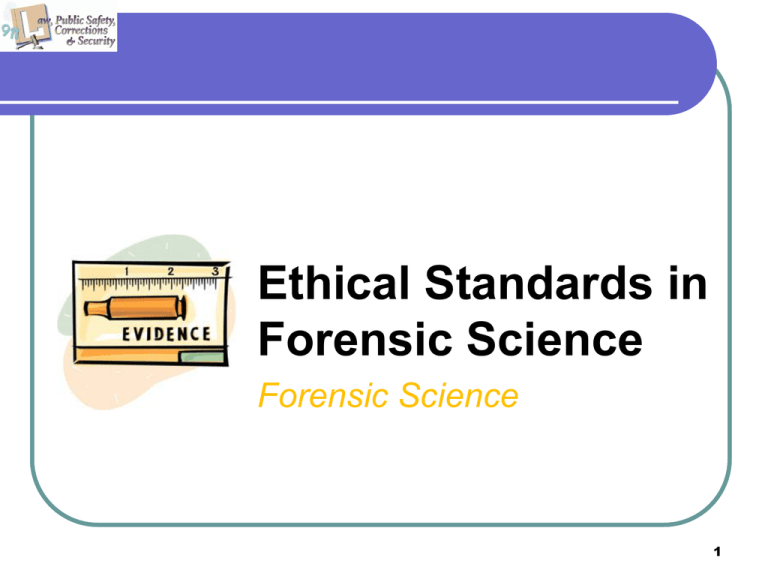
Ethical Standards in
Forensic Science
Forensic Science
1
Copyright and Terms of Service
Copyright © Texas Education Agency, 2011. These materials are copyrighted © and trademarked ™
as the property of the Texas Education Agency (TEA) and may not be reproduced without the express
written permission of TEA, except under the following conditions:
1) Texas public school districts, charter schools, and Education Service Centers may reproduce and
use copies of the Materials and Related Materials for the districts’ and schools’ educational use
without obtaining permission from TEA.
2) Residents of the state of Texas may reproduce and use copies of the Materials and Related
Materials for individual personal use only, without obtaining written permission of TEA.
3) Any portion reproduced must be reproduced in its entirety and remain unedited, unaltered and
unchanged in any way.
4) No monetary charge can be made for the reproduced materials or any document containing them;
however, a reasonable charge to cover only the cost of reproduction and distribution may be
charged.
Private entities or persons located in Texas that are not Texas public school districts, Texas Education
Service Centers, or Texas charter schools or any entity, whether public or private, educational or noneducational, located outside the state of Texas MUST obtain written approval from TEA and will be
required to enter into a license agreement that may involve the payment of a licensing fee or a royalty.
Contact TEA Copyrights with any questions you may have.
Copyright © Texas Education Agency 2011. All rights reserved.
Images and other multimedia content used with permission.
2
Forensic Science in the Legal System
Forensic science = legal
matters and legal
questions
Significant elements in
resolving civil and
criminal matters
Link or exonerate
suspects
Copyright © Texas Education Agency 2011. All rights reserved.
Images and other multimedia content used with permission.
3
Forensic Science
in the Legal System (continued)
Any distinction between civil
and criminal is artificial
Principles and procedures of
the forensic science
investigation are the same for
both
Physical evidence:
Recognize
Preserve
Analyze
Copyright © Texas Education Agency 2011. All rights reserved.
Images and other multimedia content used with permission.
4
Balance of Legal &
Ethical Responsibilities
Science = natural
phenomena
Be familiar
with the law
Law = manmade rules
& regulations
Appreciate the rules
of evidence
Copyright © Texas Education Agency 2011. All rights reserved.
Images and other multimedia content used with permission.
5
Legal Responsibilities
of Forensic Science
Follow procedures
Obey the rules of evidence
Maintain impartiality
Stay within the legal,
scientific boundaries
Report what you observe,
whatever you find,
no matter what you believe.
Copyright © Texas Education Agency 2011. All rights reserved.
Images and other multimedia content used with permission.
6
Character of Forensic Scientists
Unprejudiced and impartial
Objective
Have sufficient education
and training
Copyright © Texas Education Agency 2011. All rights reserved.
Images and other multimedia content used with permission.
7
Main Functions of Forensic Science
Analyze – unearth factual
information, regardless which
side the evidence supports
Interpret – evaluate findings,
arriving at opinions and
conclusions
Report – testify accurately
and truthfully
Copyright © Texas Education Agency 2011. All rights reserved.
Images and other multimedia content used with permission.
8
Key Terms
Forensic Science – the application of science
to the criminal and civil laws that are enforced
by police agencies in a criminal justice system
Ethics – the branch of philosophy dealing with
values relating to human conduct, with respect
to the rightness and wrongness of certain
actions, and to the goodness and badness of
the motives and ends of such actions.
Copyright © Texas Education Agency 2011. All rights reserved.
Images and other multimedia content used with permission.
9
Key Terms (continued)
Physical evidence – any object that can
establish that a crime has been committed, or
can link a crime and its victim or perpetrator
Chain of Custody – refers to the chronological
documentation or paper trail, analysis, and
disposition of physical and electronic evidence
Copyright © Texas Education Agency 2011. All rights reserved.
Images and other multimedia content used with permission.
10
Key Terms (continued)
• Rules of Evidence – govern whether, when, how,
and for what purpose proof of a case may be
placed before a court for consideration
• Impartiality – not partial or biased; fair or just
• Testimony – the statement or declaration of a
witness under oath or affirmation, usually in court
• Expert Witness – the Forensic Scientist and or
Crime Scene Technician presenting the findings of
a crime investigation in a court of law
Copyright © Texas Education Agency 2011. All rights reserved.
Images and other multimedia content used with permission.
11
Key Terms (continued)
• Chain of Custody – refers to the chronological
documentation or paper trail, showing the seizure,
custody, control, transfer, analysis, and disposition
of physical or electronic evidence
• American Academy of Forensic Science –
currently the largest forensic science organization
in the world. Scientists may opt to follow the code
of ethics from their regional organization or those
from this organization
• Preservation – to keep possession of or retain for
safekeeping
Copyright © Texas Education Agency 2011. All rights reserved.
Images and other multimedia content used with permission.
12
Establishing a Professional Standard
An important issue for
forensic science
Assessment is needed
to standardize the
collection, examination,
and analysis of physical
evidence
Copyright © Texas Education Agency 2011. All rights reserved.
Images and other multimedia content used with permission.
13
Ethical Guidelines for
Analyzing Physical Evidence
Adequate examination
Interpret and/or evaluate
findings
No excessive testing to falsely enhance
results
Use valid, reliable standards of
comparison
Use accurate, reliable equipment
Precise
Reproducible
Copyright © Texas Education Agency 2011. All rights reserved.
Images and other multimedia content used with permission.
14
Ethical Guidelines for
Interpreting Physical Evidence
Don’t confuse scientific facts
with opinion
Qualify and explain opinions
and conclusions appropriately
Don’t state conclusions and
opinions beyond the area(s) of
personal expertise
Give proper weight and
certainty to opinions and
conclusions
Copyright © Texas Education Agency 2011. All rights reserved.
Images and other multimedia content used with permission.
15
Ethical Guidelines for
Reporting Physical Evidence
Personal interest or gain should not
bias or distort a report or testimony
Never claim results and/or
accomplishments not your own
Limit testimony to conclusions drawn
from examinations and analyses
Avoid misleading or ambiguous
language and terms easily
misconstrued
Copyright © Texas Education Agency 2011. All rights reserved.
Images and other multimedia content used with permission.
16
Ethical Guidelines for Reporting
Physical Evidence (continued)
Use accepted standards for photographs,
posters, or background information
Do not distort or use unduly sensational
material
“Attorney-client” relationship applies, unless
it leads to a miscarriage of justice
Set a reasonable fee for services – never
contingency
Copyright © Texas Education Agency 2011. All rights reserved.
Images and other multimedia content used with permission.
17
Ethical Guidelines for
Professional Courtesy
Re-examining evidence is
permissible
Resolve differences of opinion
before the case goes to trial
Advising attorneys about the
testimony of another forensic
scientist is permissible if in good
faith, not malicious, and to
prevent incompetent testimony
Copyright © Texas Education Agency 2011. All rights reserved.
Images and other multimedia content used with permission.
18
Ethical Guidelines for
Professional Courtesy (continued)
Inform colleagues about new methodology for
analyses
Report invalid or unreliable methodology
Respect opinions and conclusions of colleagues
unless you can prove them as false or inaccurate
Do not misrepresent or
distort the statements,
results, reports, testimony,
or work of colleagues
Copyright © Texas Education Agency 2011. All rights reserved.
Images and other multimedia content used with permission.
19
Conclusion
As science and technology
continue to advance,
the importance and value
of forensic science
in the protection
of our society
will continue to grow.
Copyright © Texas Education Agency 2011. All rights reserved.
Images and other multimedia content used with permission.
20
Resources
0538445866, Forensic Science:
Fundamentals and Investigations (2008),
Anthony J. Bertino, South-Western
Educational Publishing
0135045207, Criminalistics (10th Edition),
Richard Saferstein, Prentice Hall
http://www.uscourts.gov/rules/
http://www.truthinjustice.org/suttonDNA.htm
http://www.lib.jjay.cuny.edu/cje/html/forensics
cience.html
Copyright © Texas Education Agency 2011. All rights reserved.
Images and other multimedia content used with permission.
21



